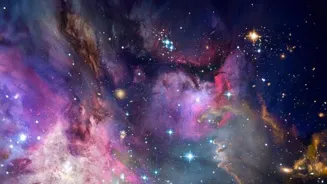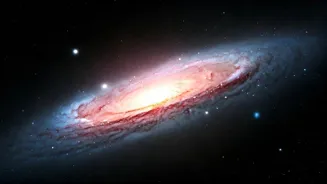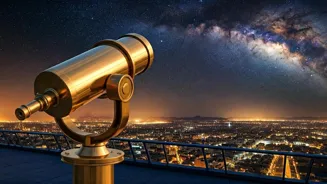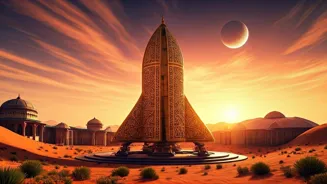Delve into the cosmic wonders of nebulae and star formation. Discover the enchanting birth of stars from swirling gas clouds. Read more for an awe-inspiring journey through the universe's magical transformations
From time immemorial, humans have looked up at the night sky, a canvas speckled with countless stars. These celestial diamonds, glittering light-years away, are not eternal but are born, live their lives, and eventually fade away.
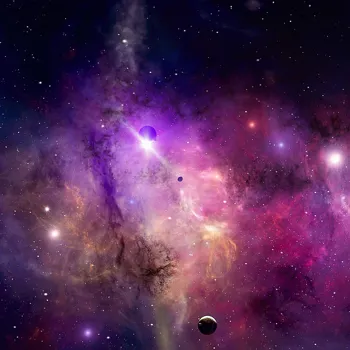
What many don't realise is that the story of a star begins long before its light reaches our eyes. It begins within the vast, swirling clouds of gas and dust called nebulae, the very cradles of stars.
Let's unravel this cosmic mystery and understand how these beautiful stellar nurseries give birth to the stars that light up our universe.
Nebulae: cosmic clouds of gas and dust, crucial for star formation and galaxy evolution
Nebulae, derived from the Latin word for "cloud," are immense interstellar clouds composed primarily of hydrogen and helium gas, along with dust particles. These are not just empty spaces, mind you.
They are regions of higher density within the interstellar medium, the sparse matter that exists between stars. Think of them as cosmic recycling centers, collecting the remnants of previous stars and the raw materials for new ones.
Some nebulae are formed from the ejected material of dying stars, like supernovae explosions, while others are pristine clouds of gas and dust, untouched by stellar events.
They come in a dazzling array of shapes and colours, each determined by its composition, density, and the light from nearby stars.
From the iconic Horsehead Nebula to the ethereal Orion Nebula, these cosmic clouds are some of the most stunning objects in the universe, captivating astronomers and space enthusiasts alike.
Studying nebulae is crucial to understanding not only star formation but also the evolution of galaxies and the very building blocks of the cosmos. Understanding these cosmic structures gives us immense joy.
Star formation in nebula: gravity triggers clump growth, fusion ignites
The process of star formation within a nebula is a complex and fascinating dance between gravity and pressure. It all starts with a slight disturbance within the cloud, perhaps triggered by a shockwave from a supernova or the gravitational pull of a massive object.
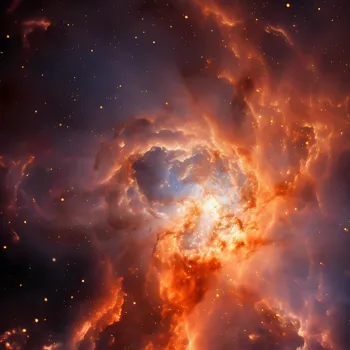
This disturbance causes the gas and dust within the nebula to become slightly denser in certain regions. As density increases, gravity takes over, pulling more and more material towards these denser clumps.
Imagine rolling a snowball down a hill; it accumulates more snow as it goes, growing larger and larger. Similarly, these clumps of gas and dust gradually accumulate mass, becoming increasingly dense and hot.
This process can take millions of years, a cosmic blink of an eye in the grand scheme of the universe. As the clump collapses, it begins to spin, forming a rotating disc of material around its center. This disc, known as a protoplanetary disc, is where planets may eventually form.
The center of the collapsing clump continues to heat up, eventually reaching temperatures high enough to ignite nuclear fusion. And in turn, birth of a star is achieved. This is undoubtedly a magical transformation.
Nuclear fusion powers stars, balancing gravity with energy
Nuclear fusion is the powerhouse that fuels stars, converting hydrogen into helium and releasing tremendous amounts of energy in the process. This energy creates an outward pressure that counteracts the inward pull of gravity, stabilizing the star and preventing it from collapsing further.
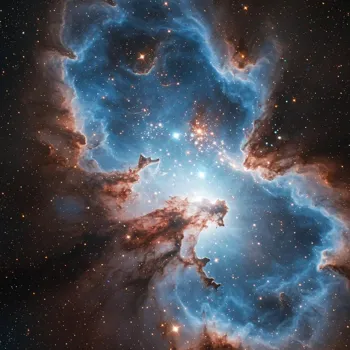
It's a delicate balancing act that allows stars to shine for billions of years. The temperature required to initiate nuclear fusion is incredibly high, around 10 million degrees Celsius. Once fusion begins, the star enters its main sequence phase, the longest and most stable part of its life.
The newly born star emits light and heat, finally becoming visible. The leftover material in the protoplanetary disc can then coalesce to form planets, asteroids, and other celestial bodies, creating a planetary system around the star.
This entire process, from the initial collapse of the nebula to the ignition of nuclear fusion, is the grand finale of star formation, a testament to the powerful and beautiful forces at work in the universe. It is extremely amazing to know this.
Stars of varying masses evolve differently, shaping the universe with heavy elements
The type of star that forms within a nebula depends on the amount of mass that collapses into the core. Small stars, like red dwarfs, have relatively low masses and burn their fuel slowly, living for trillions of years. Larger stars, like our Sun, have a moderate mass and live for billions of years.
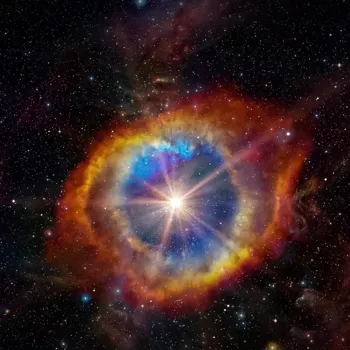
The most massive stars, however, are giants, burning their fuel at an extravagant rate, only existing for a few million years before exploding as supernovae, enriching the cosmos with heavy elements.
These heavy elements, forged in the hearts of massive stars and scattered across the universe by supernova explosions, are what make up planets and even life itself. We are, quite literally, stardust.
The study of stellar evolution is crucial to understanding the life cycle of stars and the origin of the elements that make up our universe. It's a field that constantly evolves as new observations and simulations refine our understanding of the cosmos. It is important to always research.
indian astronomers study nebulae, star formation, inspire future space explorers
Indian astronomers have made significant contributions to the study of nebulae and star formation. From ancient observations to modern cutting-edge research, Indian scientists have played a vital role in unravelling the mysteries of the cosmos.
Observatories like the Giant Metrewave Radio Telescope (GMRT) and the upcoming Thirty Meter Telescope (TMT) provide invaluable data for studying nebulae and star-forming regions.
Indian astronomers are actively involved in projects that aim to map the distribution of nebulae in our galaxy, study the properties of protoplanetary discs, and understand the processes that trigger star formation.
This ongoing research not only advances our understanding of the universe but also inspires future generations of scientists and engineers to explore the wonders of space. It brings pride to us Indians. This is all about the cosmos.
AI Generated Content. Glance/InMobi shall have no liability for the content